Refers to the Change That Family Members Make in Social Class From One Generation to the Next
Social Course in the United States
Learning Objectives
- Distinguish objective and subjective measures of social class.
- Discuss whether the U.s. has much vertical social mobility.
Most sociologists define social class as a group based on like social factors like wealth, income, education, and occupation. These factors impact how much ability and prestige a person has. Social stratification reflects an unequal distribution of resource. In nigh cases, having more money ways having more power or more opportunities. At that place is a surprising amount of disagreement among sociologists on the number of social classes in the United States and fifty-fifty on how to measure social class membership. We first expect at the measurement event so discuss the number and types of classes sociologists have delineated.
Measuring Social Class
We can measure social class either objectively or subjectively. If we choose the objective method, we classify people according to one or more than criteria, such every bit their occupation, education, and/or income. The researcher is the one who decides which social grade people are in based on where they stand in regard to these variables. If we cull the subjective method, nosotros ask people what grade they think they are in. For instance, the General Social Survey asks, "If you were asked to use one of four names for your social class, which would you say you lot vest in: the lower form, the working class, the middle grade, or the upper class?" Effigy 8.3 "Subjective Social Class Membership" depicts responses to this question. The problem with such a subjective measure is that some people say they are in a social class that differs from what objective criteria might betoken they are in. This problem leads virtually sociologists to favor objective measures of social class when they report stratification in American society.
Effigy eight.3 Subjective Social Class Membership
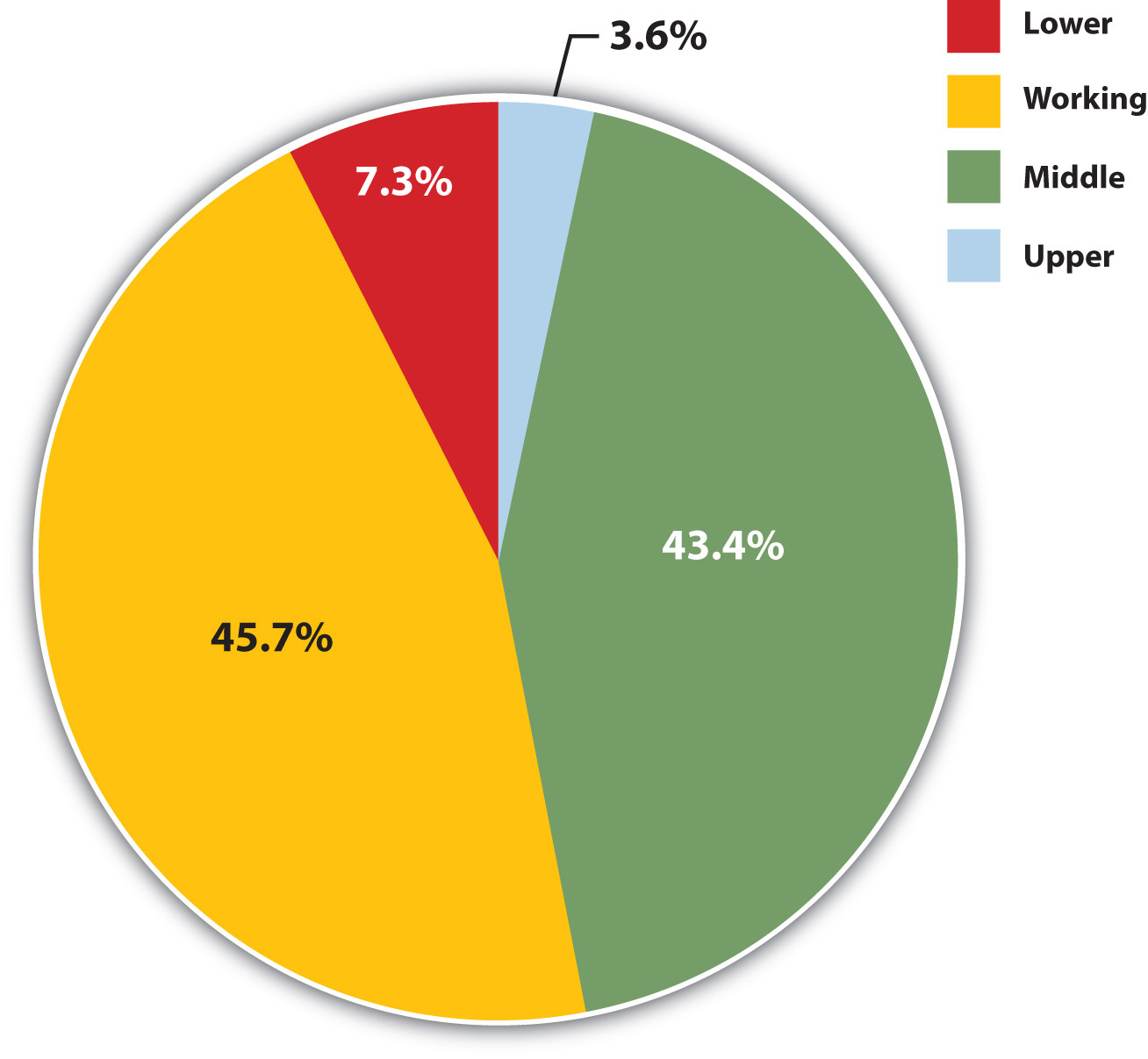
Source: Information from General Social Survey, 2008.
Yet even hither there is disagreement between functionalist theorists and conflict theorists on which objective measures to employ. Functionalist sociologists rely on measures of socioeconomic status (SES), such as education, income, and occupation, to determine someone's social class. Sometimes 1 of these three variables is used by itself to measure social course, and sometimes two or all three of the variables are combined (in means that demand not concern united states) to measure social course. When occupation is used, sociologists often rely on standard measures of occupational prestige. Since the belatedly 1940s, national surveys take asked Americans to rate the prestige of dozens of occupations, and their ratings are averaged together to yield prestige scores for the occupations (Hodge, Siegel, & Rossi, 1964). Over the years these scores have been relatively stable. Hither are some boilerplate prestige scores for diverse occupations: dr., 86; college professor, 74; simple schoolhouse teacher, 64; letter carrier, 47; garbage collector, 28; and janitor, 22.
Despite SES's usefulness, disharmonize sociologists prefer different, though however objective, measures of social class that accept into account buying of the means of production and other dynamics of the workplace. These measures are closer to what Marx meant past the concept of class throughout his piece of work, and they take into account the many types of occupations and workplace structures that he could not have envisioned when he was writing during the 19th century.
For example, corporations have many upper-level managers who do not own the means of product but nevertheless determine the activities of workers under them. They thus practise non fit neatly into either of Marx's two major classes, the suburbia or the proletariat. Recognizing these issues, conflict sociologists delineate social form on the basis of several factors, including the ownership of the ways of production, the caste of autonomy workers savor in their jobs, and whether they supervise other workers or are supervised themselves (Wright, 2000).
The American Grade Structure
As should be axiomatic, information technology is not easy to make up one's mind how many social classes exist in the United States. Over the decades, sociologists have outlined equally many as six or seven social classes based on such things as, once more, instruction, occupation, and income, but as well on lifestyle, the schools people's children attend, a family's reputation in the community, how "former" or "new" people'due south wealth is, and and then forth (Coleman & Rainwater, 1978; Warner & Lunt, 1941). For the sake of clarity, we will limit ourselves to the four social classes included in Effigy viii.iii "Subjective Social Class Membership": the upper course, the center class, the working form, and the lower class. Although subcategories exist within some of these broad categories, they all the same capture the most of import differences in the American grade structure (Gilbert, 2011). The annual income categories listed for each class are admittedly somewhat arbitrary but are based on the percentage of households above or beneath a specific income level.
The Upper Grade
The upper class is considered the top, and only the powerful elite become to come across the view from in that location. In the The states, people with extreme wealth brand upward ane per centum of the population, and they ain i-third of the land's wealth (Beeghley 2008).
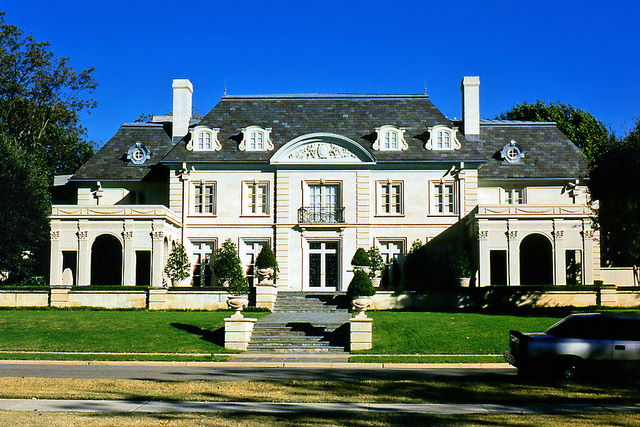
The upper form in the Usa consists of near one% of all households and possesses much wealth, power, and influence.
Coin provides not just access to material goods, merely also access to a lot of power. As corporate leaders, members of the upper course make decisions that touch the job status of millions of people. Equally media owners, they influence the collective identity of the nation. They run the major network television receiver stations, radio broadcasts, newspapers, magazines, publishing houses, and sports franchises. As board members of the most influential colleges and universities, they influence cultural attitudes and values. As philanthropists, they establish foundations to back up social causes they believe in. Equally entrada contributors, they sway politicians and fund campaigns, sometimes to protect their own economic interests.
U.South. society has historically distinguished betwixt "old coin" (inherited wealth passed from one generation to the next) and "new money" (wealth you lot have earned and built yourself). While both types may have equal internet worth, they have traditionally held dissimilar social standings. People of old money, firmly situated in the upper class for generations, take held loftier prestige. Their families have socialized them to know the customs, norms, and expectations that come with wealth. Oftentimes, the very wealthy don't piece of work for wages. Some study concern or get lawyers in order to manage the family fortune. Others, such as Paris Hilton and Kim Kardashian, capitalize on being a rich socialite and transform that into glory status, flaunting a wealthy lifestyle.
However, new-money members of the upper grade are not oriented to the community and mores of the elite. They haven't gone to the nearly exclusive schools. They accept not established old-money social ties. People with new money might flaunt their wealth, buying sports cars and mansions, but they might still exhibit behaviors attributed to the centre and lower classes.
The Eye Grade
Many people consider themselves middle form, merely there are differing ideas about what that means. People with almanac incomes of $150,000 call themselves middle class, equally practice people who annually earn $30,000. That helps explain why, in the United States, the middle class is broken into upper and lower subcategories. Upper-middle-class people tend to concord bachelor'due south and postgraduate degrees. They've studied subjects such equally concern, direction, police, or medicine. Lower-middle-grade members hold bachelor's degrees from four-year colleges or associate'due south degrees from ii-year customs or technical colleges.
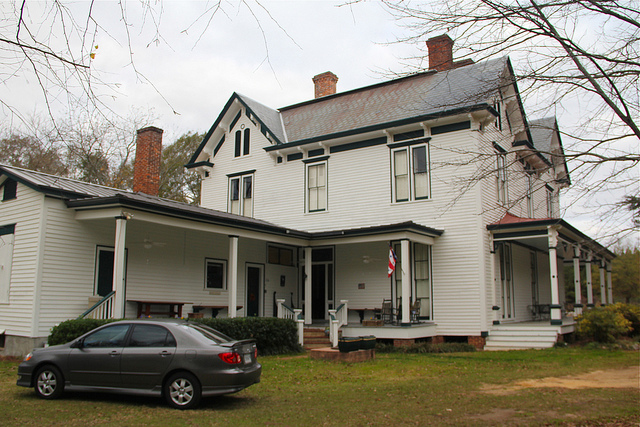
The upper-middle class in the United states consists of about 4.iv% of all households, with incomes ranging from $150,000 to $199,000.
Condolement is a key concept to the eye class. Eye-class people work hard and alive fairly comfortable lives. Upper-center-class people tend to pursue careers that earn comfortable incomes. They provide their families with large homes and nice cars. They may go skiing or canoeing on vacation. Their children receive high-quality didactics and healthcare (Gilbert 2010).
In the lower middle grade, people concur jobs supervised by members of the upper middle class. They fill technical, lower-level management or authoritative support positions. Compared to lower-class work, lower-middle-class jobs carry more than prestige and come up with slightly higher paychecks. With these incomes, people tin afford a decent, mainstream lifestyle, just they struggle to maintain information technology. They generally don't have enough income to build pregnant savings. In addition, their grip on class status is more precarious than in the upper tiers of the class system. When budgets are tight, lower-eye-class people are oftentimes the ones to lose their jobs.
The Working Class

The working class in the United States consists of well-nigh 25% of all households, whose members work in blue-collar jobs and less skilled clerical positions.
Lisa Risager – Ebeltoft – CC Past-SA ii.0.
Working-class households by and large work in blueish-collar jobs such as factory piece of work, construction, eating place serving, and less skilled clerical positions. People in the working course typically do not have iv-twelvemonth college degrees, and some do non take loftier school degrees. Although most are not living in official poverty, their financial state of affairs is very uncomfortable. A single large medical bill or expensive car repair would be almost impossible to pay without going into considerable debt. Working-class families are far less likely than their wealthier counterparts to own their ain homes or to send their children to college. Many of them live at risk for unemployment every bit their companies downsize by laying off workers even in adept times, and hundreds of thousands began to be laid off when the U.S. recession began in 2008.
The Lower Class
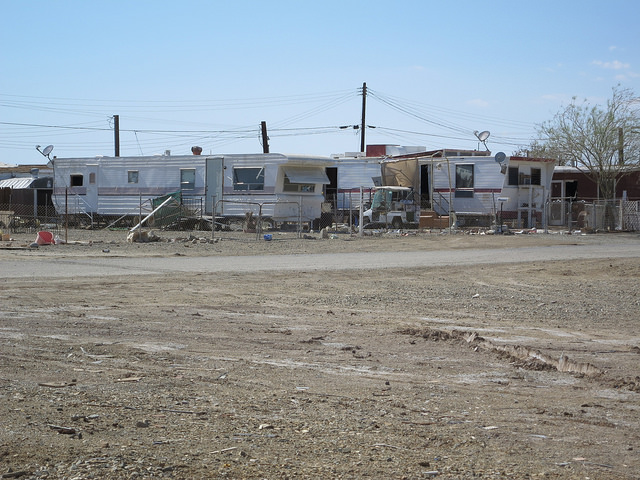
The lower class or poor in the United states constitute nigh 25% of all households. Many poor individuals lack loftier school degrees and are unemployed or employed simply part time.
Although lower class is a mutual term, many observers adopt a less-negative sounding term like the poor, which is used here. Just similar the middle and upper classes, the lower class can be divided into subsets: the working form, the working poor, and the underclass. Compared to the lower eye class, lower-class people have less of an educational background and earn smaller incomes. They work jobs that require little prior skill or experience and often do routine tasks nether shut supervision.
The working poor have unskilled, low-paying employment. Yet, their jobs rarely offer benefits such equally healthcare or retirement planning, and their positions are often seasonal or temporary. They work as sharecroppers, migrant farm workers, business firm cleaners, and 24-hour interval laborers. Some are high school dropouts. Some are illiterate, unable to read task ads.
How can people work full-time and still be poor? Even working full-time, millions of the working poor earn incomes too meager to support a family unit. Minimum wage varies from state to state, merely in many states it is approaching $8.00 per hour (Department of Labor 2014). At that rate, working 40 hours a week earns $320. That comes to $xvi,640 a year, before tax and deductions. Even for a single person, the pay is low. A married couple with children will accept a hard time covering expenses.
The underclass is the United States' lowest tier. Members of the underclass live mainly in inner cities. Many are unemployed or underemployed. Those who do agree jobs typically perform menial tasks for lilliputian pay. Some of the underclass are homeless. For many, welfare systems provide a much-needed back up through food aid, medical care, housing, and the like.
We will talk over the poor further when we focus later in this affiliate on inequality and poverty in the Us.
Social Mobility
Social mobility refers to the ability to change positions within a social stratification system. When people improve or diminish their economic status in a manner that affects social class, they experience social mobility.
Individuals tin can experience upwardly or downwards social mobility for a diverseness of reasons. Upward mobility refers to an increase—or upwardly shift—in social class. In the United States, people applaud the rags-to-riches achievements of celebrities like Oprah Winfrey or LeBron James. Simply the truth is that relative to the overall population, the number of people who rising from poverty to wealth is very minor. Nonetheless, upward mobility is not simply about becoming rich and famous. In the United States, people who earn a college caste, get a job promotion, or ally someone with a good income may movement upwardly socially. In contrast, downward mobility indicates a lowering of ane's social class. Some people move downward because of business organization setbacks, unemployment, or illness. Dropping out of school, losing a job, or getting a divorce may consequence in a loss of income or condition and, therefore, downward social mobility.
 A higher education is a key stride toward achieving up social mobility. Still, the payoff of education is often higher for men than for women and for whites than for people of color.
A higher education is a key stride toward achieving up social mobility. Still, the payoff of education is often higher for men than for women and for whites than for people of color.
A key vehicle for upward mobility is formal teaching. Regardless of the socioeconomic status of our parents, we are much more likely to end up in a loftier-paying job if nosotros attain a college caste or, increasingly, a graduate or professional caste. Figure 8.four "Teaching and Median Earnings of Year-Round, Full-Time Workers, 2007" vividly shows the difference that instruction makes for Americans' median annual incomes. Notice, however, that for a given level of didactics, men'southward incomes are greater than women'due south. Figure 8.four "Pedagogy and Median Earnings of Twelvemonth-Circular, Full-Fourth dimension Workers, 2007" thus suggests that the payoff of education is higher for men than for women, and many studies support this conclusion (Greenish & Ferber, 2008). The reasons for this gender difference are complex and will be discussed farther in Chapter xi "Gender and Gender Inequality". To the extent vertical social mobility exists in the U.s.a., then, it is college for men than for women and higher for whites than for people of color.
Figure 8.4 Didactics and Median Earnings of Year-Round, Full-Time Workers, 2007
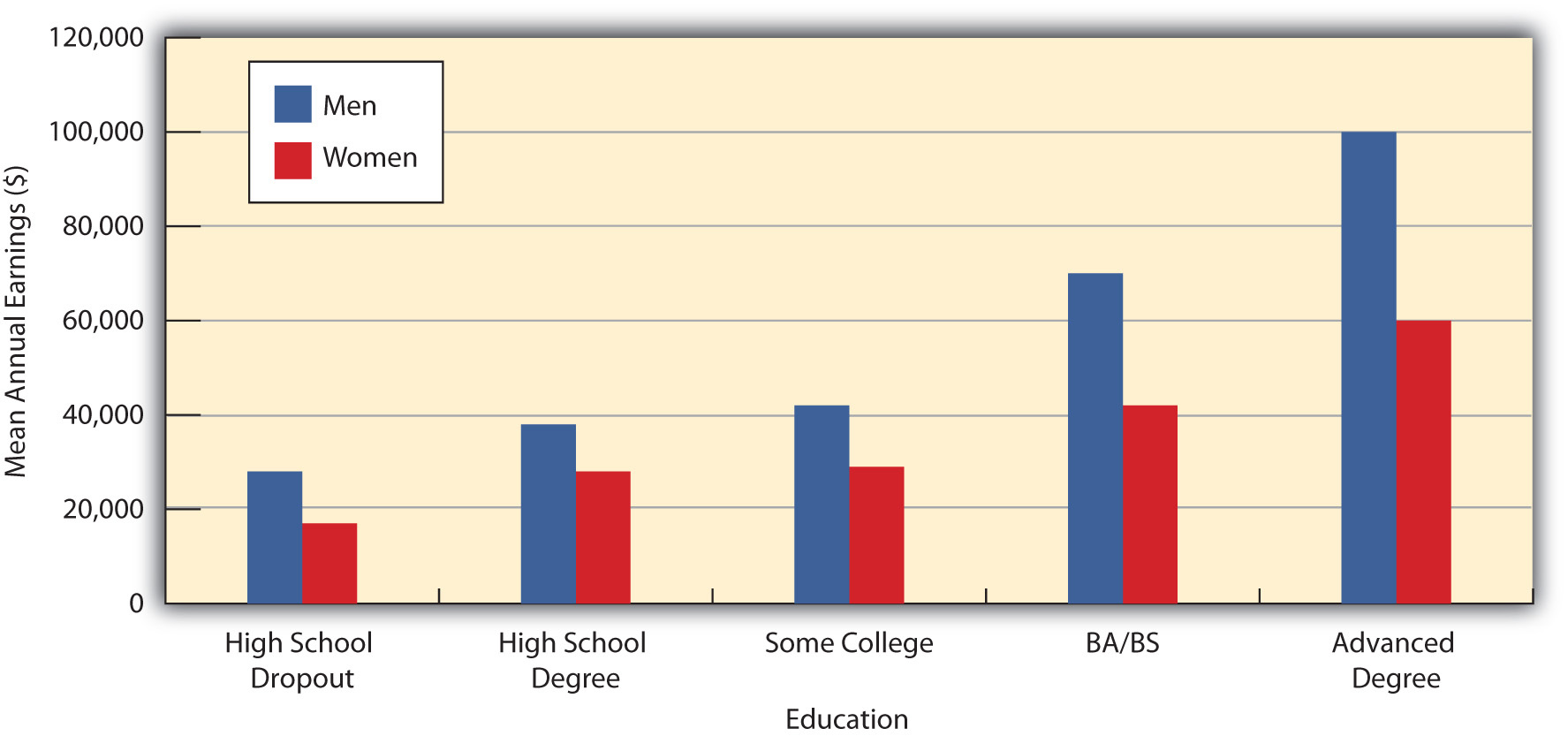
Source: Data from U.S. Census Bureau. (2010). Statistical abstract of the United states: 2010. Washington, DC: U.S. Regime Printing Role. Retrieved from http://www.census.gov/compendia/statab.
It is not uncommon for different generations of a family to vest to varying social classes. This is known as intergenerational mobility . For example, an upper-class executive may take parents who belonged to the heart class. In turn, those parents may have been raised in the lower class. Patterns of intergenerational mobility can reflect long-term societal changes.
Similarly, intragenerational mobility refers to changes in a person'due south social mobility over the course of his or her lifetime. For example, the wealth and prestige experienced by one person may be quite different from that of his or her siblings.
Structural mobility happens when societal changes enable a whole group of people to move up or downward the social form ladder. Structural mobility is attributable to changes in society as a whole, not private changes. In the get-go half of the twentieth century, industrialization expanded the U.S. economy, raising the standard of living and leading to upward structural mobility. In today'south work economic system, the recent recession and the outsourcing of jobs overseas take contributed to high unemployment rates. Many people take experienced economical setbacks, creating a wave of downward structural mobility.
When analyzing the trends and movements in social mobility, sociologists consider all modes of mobility. Scholars recognize that mobility is not equally common or easy to achieve as many people remember. In fact, some consider social mobility a myth. The American Dream does exist, but information technology is much more likely to remain just a dream unless we come from advantaged backgrounds. In fact, at that place is less vertical mobility in the United states than in other Western democracies. As a contempo analysis summarized the evidence, "At that place is considerably more mobility in most of the other developed economies of Europe and Scandinavia than in the United States" (Mishel, Bernstein, & Shierholz, 2009, p. 108).
Key Takeaways
- Several ways of measuring social class exist. Functionalist and conflict sociologists disagree on which objective criteria to use in measuring social form. Subjective measures of social class, which rely on people rating their ain social course, may lack some validity.
- Sociologists disagree on the number of social classes in the Usa, only a common view is that the U.s. has 4 classes: upper, middle, working, and lower. Further variations exist within the upper and middle classes.
- The The states has some vertical social mobility, only not as much every bit several nations in Western Europe.
Self Check
References
Beeghley, Leonard. 2008. The Construction of Social Stratification in the United states. Upper Saddle River, NJ: Prentice Hall.
Coleman, R. P., & Rainwater, L. (1978). Social continuing in America. New York, NY: Basic Books.
Gilbert, D. (2011). The American class structure in an age of growing inequality (8th ed.). Chiliad Oaks, CA: Pine Forge Press.
Green, C. A., & Ferber, G. A. (2008). The long-term impact of labor market interruptions: How crucial is timing? Review of Social Economy, 66, 351–379.
Hodge, R. Due west., Siegel, P., & Rossi, P. (1964). Occupational prestige in the U.s., 1925–63. American Journal of Sociology, 70, 286–302.
Mishel, L., Bernstein, J., & Shierholz, H. (2009). The state of working America 2008/2009. Ithaca, NY: ILR Press [An banner of Cornell University Press].
Warner, W. L., & Lunt, P. S. (1941). The social life of a modern community. New Haven, CT: Yale University Press.
Wright, E. O. (2000). Class counts: Comparative studies in class analysis. New York, NY: Cambridge University Printing.
Source: https://pressbooks.howardcc.edu/soci101/chapter/8-3-social-class-in-the-united-states/
0 Response to "Refers to the Change That Family Members Make in Social Class From One Generation to the Next"
Enregistrer un commentaire